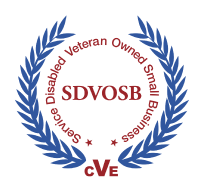Deepfake Voices & Authentic Audio: The New Admissibility Battle
Contributed by Kris Carlson, COO, Former ICAC Commander, and Digital Forensics Investigator/Testifying Expert
Series context. This fourth installment continues our exploration of emerging evidentiary frontiers. Earlier parts examined video manipulation, mobile payments, and digital evidence chains. Now we turn to audio, where AI-generated voices and synthetic recordings are forcing courts to revisit assumptions about what “authentic” means. [1]
A Crisis of Trust in Recorded Voices
For decades, recordings carried an air of truth in court. A confession on tape, a 911 call, or a heated negotiation was seen as nearly self-proving, however, like in other areas we have discussed, times have changed. Generative AI now enables anyone to clone a voice from just seconds of sample audio, producing lifelike speech that is indistinguishable to the naked ear from genuine recordings. Fraudsters have already leveraged this to authorize wire transfers, fabricate threats, and impersonate public officials [2].
Courts are faced with a dilemma and previously when a witness could corroborate a recording based upon first-hand knowledge of the person who was recorded, authentication of modern audio evidence demands more than a casual assertion that “it sounds like him.” Courts and regulators are signaling that voice recordings must be validated through scientifically reliable methods, not mere perception.
LCG perspective. The battlefield has shifted. Counsel can no longer assume audio recordings will sail into evidence unchallenged. Forensic readiness requires building authentication into discovery from the moment audio is identified. [4]
Forensic Techniques for Authentication
Modern forensic audio validation blends science and technology to test authenticity:
- Spectrographic Analysis – Mapping frequencies to reveal speaker-specific patterns.
- Waveform Study – Detecting abrupt changes that betray splicing or tampering.
- Biometric Voiceprints – Comparing audio against known speaker samples for identity validation.
- Noise Consistency Analysis – Evaluating environmental uniformity across a recording.
- Chain of Custody & Hashing – Documenting provenance and ensuring no alterations [5].
These methods must withstand Daubert scrutiny, i.e., they must be testable, peer-reviewed, have known error rates, and be generally accepted in the field [6]. Without such rigor, recordings risk exclusion even before trial.
Legal Standards Under Pressure
- FRE 901(b)(5): Voice authentication requires identification through familiarity or expert analysis. [3]
- FRE 702: Limits expert testimony to scientifically reliable methods. [1]
- Daubert v. Merrell Dow (1993): Establishes the benchmark for forensic reliability. [6]
- FRCP 37(e): Applies spoliation standards to mishandled or missing recordings. [7]
- SWGDE Best Practices: Recommends procedures for forensic audio authentication and preservation [8].
Together, these frameworks underscore that audio must be treated with the same evidentiary rigor as video or digital documents.
The Emerging Future of Voiceprints
Voiceprints sit at the junction of the two tracks we have emphasized, file authenticity and speaker identity. As generative audio grows more convincing, courts and counsel care less about superficial anomalies and more about whether the voice belongs to the person alleged. That places biometric speaker comparison alongside spectrographic and continuity analysis rather than apart from them, and it raises familiar reliability questions the rules already contemplate.
Three issues will shape how quickly courts embrace voiceprints in everyday practice.
- First, error rates and stability, how consistent speaker-specific features remain across microphones, bandwidth, stress, and background conditions, and how those error rates are explained to the trier of fact.
- Second, privacy and stewardship, if exemplars are collected, who holds them, under what safeguards, and for how long, aligned with existing evidence preservation discipline.
- Third, reliability in context, whether the method is validated, transparent about thresholds, and applied by qualified experts who document parameters the same way they would for other forensic audio work.
None of this requires reinventing an effective forensically valid approach, it requires integrating voice attribution into the same defensible workflow already used for capture, preservation, verification, reporting and testimony. When treated that way, voiceprints stop feeling like a bolt-on and start functioning as one more corroborating line of proof.
With that trajectory in mind, the playbook that follows assumes voiceprint challenges by default and shows how to prepare teams, tools, and testimony accordingly.
Quick Checklist
- Preserve original audio with a verified chain of custody.
- Apply appropriate validation under FRE 901.
- Prepare experts to defend methodology under Daubert.
- Anticipate admissibility challenges early in discovery. [6][7]
Final Thought
In the courtroom, “hearing is believing” is no longer enough. Synthetic voices and manipulated recordings have upended old assumptions about authenticity. Only through rigorous forensic methods, validated standards, and expert testimony can courts distinguish truth from fabrication. The battle over admissibility has begun, and counsel must be ready. [9]
References (endnotes)
[1] Federal Rules of Evidence 702 – Expert Testimony Standards.
[2] Europol, Malicious Uses and Abuses of AI Report (2020); FBI Public Service Advisory on Deepfake Risks (2023).
[3] Federal Rules of Evidence 901(b)(5) – Authentication of Voice Identification.
[4] Sedona Conference, Best Practices Commentary on the Use of Forensic Experts (2021).
[5] ISO/IEC 27037:2012 – Guidelines for identification, collection, and preservation of electronic evidence.
[6] Daubert v. Merrell Dow Pharmaceuticals, 509 U.S. 579 (1993).
[7] Federal Rules of Civil Procedure Rule 37(e) – Spoliation of ESI.
[8] Scientific Working Group on Digital Evidence (SWGDE) – Best Practices for Forensic Audio Analysis (2021).
[9] LCG Research Note, Admissibility Trends in AI-Era Evidence (2025).







